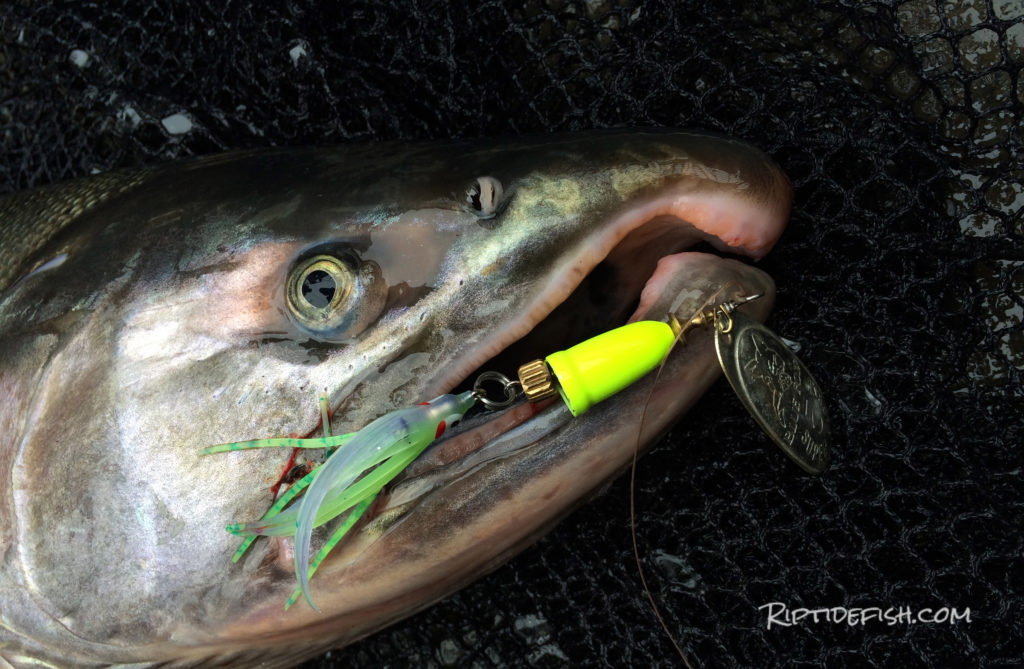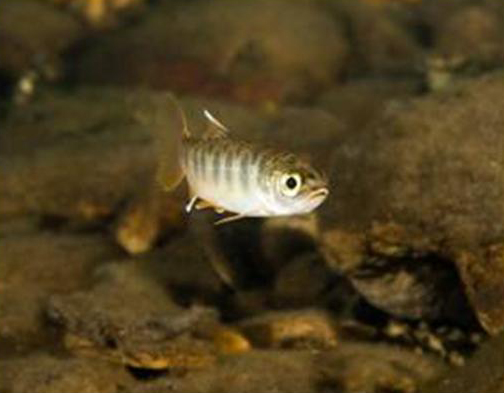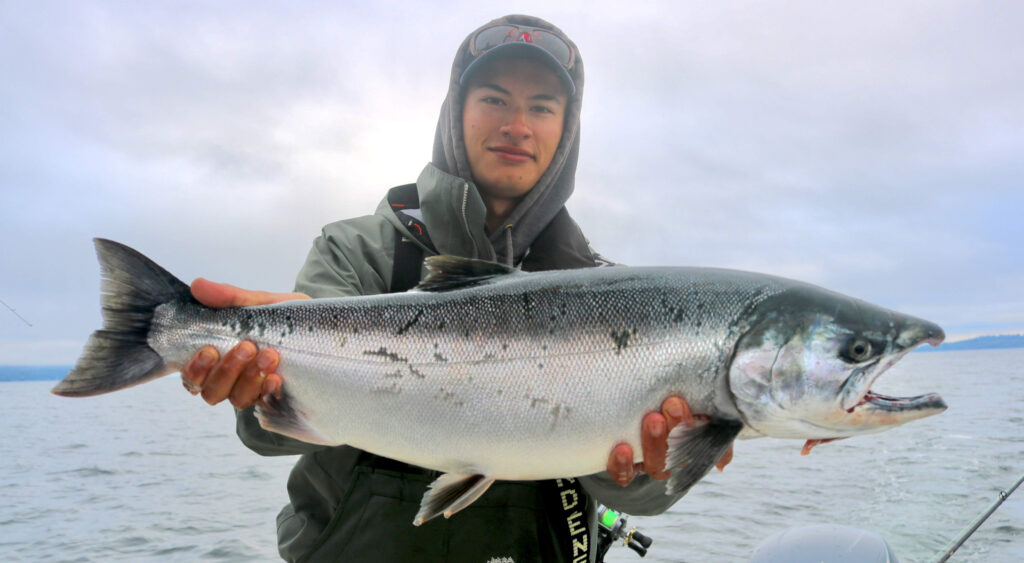
Photo Courtesy of Alaska Fly Fishing Goods This fly is tied on a size 2 hook and is made to be destroyed by king salmon. The Mega Egg Sucking Leech makes this classic fly a beast. It has been used for years on salmon, trout, and char. The Egg Sucking Leech is an Alaskan classic. Photo Courtesy of Alaska Fly Fishing Goods Mega Egg Sucking Leech

The Hammerhead Hair Wog is made with spun deer hair and a large head that creates a beautiful wake. Watching a silver smack a topwater fly is one of the best feelings. Looking for topwater action? Pick up a Hammerhead Hair Wog, it is made for coho and chum. Photo Courtesy of Alaska Fly Fishing Goods Hammerhead Hair Wog Tie Mercer’s Sockeye Fly on the end of your line for some sockeye action. This fly is sure to catch sockeye salmon, it’s flashy but a classic. The Pink & White Clouser Minnow is a must-have in your salmon fly box! Photo Courtesy of Alaska Fly Fishing Goods Mercer’s Sockeye Fly Although it doesn’t look like much, it is very effective. Silvers, pinks, and chum are suckers for the Clouser Minnow. Photo Courtesy of Alaska Fly Fishing Goods Pink & White Clouser Minnow Although created for king salmon, the pink Guide Intruder is also a great option for coho salmon. The Guide Intruder comes in pink, black, and chartreuse. If you’re into spey fishing, you will want this buddy on the end of your line. This intruder pattern is irresistible to king salmon. The Dolly Llama is fairly simple to tie, and Alaskan salmon won’t care if your fly tying skills are minimal or advanced! Photo Courtesy of Alaska Fly Fishing Goods Guide Intruder You can buy it online at Alaska Fly Fishing Goods or tie it yourself. Catching pink salmon on the fly is a blast though, and the best time to do it is in August.įlies to Use to Catch Alaskan Salmon Dolly Llama/Dalai LamaĪ classic and effective Alaskan fly, the Dolly Llama is great for salmon (and rainbow) fishing! Silvers will smack this streamer without a second thought. Many Alaskans do not eat humpies because of how bony they are. These salmon are also known as humpies due to the large humps that spawning males get towards spawning. Pink salmon are the smallest Alaskan salmon species, but they are still fun to catch. These tiger-striped fish put up a good fight on the fly and can grow to be 10-13 lbs. Although they aren’t the tastiest, chum salmon are the most distributed of the pacific salmon. Some also say they are known as dog salmon because sled dogs used to be fed this less tasty fish. They are also known as dog salmon because of their large canine-like teeth.

Many local Alaskans call sockeye salmon “reds” (not to be confused with redds) because of their color.Ĭhum are uniquely represented by their bluish-grey tiger stripes and large kype (in spawning males). As the salmon go to their spawning grounds, they turn a bright red color. Sockeye spawn in Alaska during June and July. They are the most economically important fish in Alaska due to their popularity. People come from all over the world to catch Alaskan sockeye. Also known as the king salmon, this huge fish averages a weight of 20 to 30 pounds! King fishing is best from mid-June to July. As with just about anything in the last frontier, this salmon goes well with the motto, “go big, or go home”. For an ultimate Alaska fishing adventure, we suggest going in the fall! Photo Courtesy of Patrick Perry Chinook SalmonĪlaska’s state fish is the chinook salmon.

Fishing for coho is best in August and September, which also happen to be the best months for rainbow trout fishing in Alaska. Coho salmon are also known as silvers due to their bright silver color. If you like an aggressive bite and fight, go coho fishing! These salmon are known to hit topwater flies and are just plain fun. Table of Contents: Alaska’s Salmon Species Flies to Use to Catch Alaskan Salmon Gear Setup for Alaskan Salmon Fishing Where to Fish For All 5 Salmon Species Alaska’s Salmon Species Coho Salmon


 0 kommentar(er)
0 kommentar(er)
